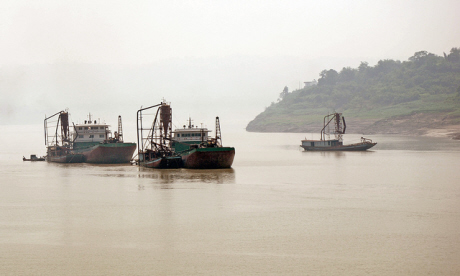
We must learn from the extinction of the ‘goddess of the Yangtze'
It was the news I’d been expecting but dreading. The Yangtze River dolphin has been declared extinct. We’ve failed to save an animal that has existed for more than 20 million years.
The Yangtze River dolphin, or baiji, was a beautiful dolphin with a long, narrow, slightly upturned beak, a low, triangular dorsal fin and tiny eyes. An exclusively freshwater dolphin, unique to China, it was dubbed the ‘goddess of the Yangtze’. In Chinese legend it was the reincarnation of a princess who refused to marry a man she did not love, and was drowned by her father for shaming the family.
I have some of the only photos ever taken of the baiji. Many years ago, I photographed a single captive male, called Qi-Qi (pronounced chee-chee), who was rescued after being injured by fishing hooks. He remained in captivity at the Institute of Hydrobiology in Wuhan, China until his death, aged about 24, on 14 July 2002, teaching scientists much, over many years, about his species.
Qi-Qi’s companions once lived along a 1,700km stretch of the Yangtze River, which flows more than 6,000km eastwards to the East China Sea. But recent surveys rang loud alarm bells. There were estimated to be about 400 survivors in 1979, 300 in 1986 and a mere 200 in 1990. Another survey in 1998 yielded just seven encounters. A fisherman claimed to have seen a lone dolphin in September 2004; that was the last reported sighting in the wild.
A recent six-week expedition, involving high-tech equipment and 30 scientists from China, Japan, the USA and Switzerland, failed to find any evidence of survivors, confirming the baiji is almost certainly the first cetacean (whale, dolphin or porpoise) to have been driven to extinction in historical times.
It’s not really surprising. Behind the undeniably spectacular facade that makes Asia’s longest river such a popular tourist destination lies impending disaster. The Yangtze basin is home to an astonishing 12% of the entire human population and, perhaps inevitably, the region faces an inordinate number of threats.
With heavy boat traffic, agricultural run-off, industrial pollution, riverbank development and overfishing, the dolphins didn’t really stand a chance. Then the infamous Three Gorges Dam – one of the largest ever built – changed water levels, current movements and sandbank patterns and, quite possibly, was the final nail in its ecological coffin.
The dolphin was well known in China. The first time I went in search of the aquatic equivalent of the giant panda was in 1990, with Douglas Adams, and we were overwhelmed by its phenomenally high profile.
We drank Baiji beer and Baiji Cola, stayed in the Baiji Hotel and used Baiji toilet paper. We even came across Baiji computerised weighing scales and Baiji phosphorus fertiliser. But the public relations dream ultimately fell victim to the Chinese economic boom. Efforts to save it from extinction were too little, too late.
We barely have time to mourn before worrying about its two closest relatives, the Indus and Ganges river dolphins. They are both critically endangered, face similar threats and are heading for exactly the same fate. Will we learn the lesson from the loss of the Yangtze River dolphin? I doubt it – but we must not give up hope.
Meanwhile, in years to come, my photographs of the Yangtze River dolphin will be of immense historical value. They will be among the few records of its existence – like those fading black-and-white 1930s pictures of the last surviving Tasmanian tiger. What a sobering thought.
Mark Carwardine is an award-winning wildlife writer, photographer and broadcaster